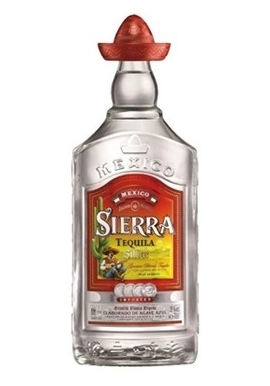There are two basic categories of tequila: Mixtos and 100% Agave. Mixtos use up to 49% of other sugars in the fermentation process, with Agave taking up the remainder. Mixtos use both glucose and fructose sugars. With 100% agave tequila, blanco or plata is harsher with the bold flavours of the distilled agave up front, while reposado and añejo ...
There are two basic categories of tequila: Mixtos and 100% Agave. Mixtos use up to 49% of other sugars in the fermentation process, with Agave taking up the remainder. Mixtos use both glucose and fructose sugars. With 100% agave tequila, blanco or plata is harsher with the bold flavours of the distilled agave up front, while reposado and añejo are smoother, subtler, and more complex. As with other spirits that are aged in casks, tequila takes on the flavours of the wood, while the harshness of the alcohol mellows. The major flavour distinction with 100% agave tequila is the base ingredient, which is more vegetal than grain spirits (and often more complex).Tequila is usually bottled in one of five categories:Blanco ('white') or plata ('silver') – white spirit, un-aged and bottled or stored immediately after distillation, or aged less than two months in oak barrels; Joven ('young') or oro ('gold') – un-aged 'blanco' tequila, blended with rested or aged tequilas, and often with caramel colouring, sugar-based syrup, glycerin, and/or oak extract added so as to resemble aged tequila; Reposado ('rested') – aged a minimum of two months, but less than a year in oak barrels; Añejo ('aged' or 'vintage') – aged a minimum of one year, but less than 3 years in oak barrels; Extra Añejo ('extra aged' or 'ultra aged') – aged a minimum of three years in oak barrels. In Mexico, tequila is often drunk straight, without salt and lemon. It is popular in some regions to drink fine tequila with a side of sangrita - a sweet, sour and spicy drink typically made from orange juice, grenadine (or tomato juice) and hot chilies. Equal-sized shots of tequila and sangrita are sipped alternately, without salt or lime. Outside Mexico, a single shot of tequila is often served with salt and a slice of lemon. This is called 'tequila cruda' and is sometimes referred to as 'training wheels,' 'lick-sip-suck,' or 'lick-shoot-suck' (referring to the way in which the combination of ingredients is imbibed). The drinker moistens the back of their hand below the index finger (usually by licking) and pours on the salt. Then the salt is licked off the hand, the tequila is then drunk and the fruit slice is quickly bitten. It is common for groups of drinkers to do this simultaneously. Drinking tequila in this way is often erroneously called a Tequila Slammer, but this is a mixed tequila and carbonated drink. Though the traditional Mexican shot is straight tequila, lime is the fruit of choice when a chaser must be used. It is believed that the salt lessens the 'burn' of the tequila and the sour fruit balances and enhances the flavor. In Germany and some other countries, tequila oro (gold) is often consumed with cinnamon before and slices of orange after, while tequila blanco (silver) is consumed with salt and lime. Finally, as with other popular liquors, there exist a number of shot-related drinking games and 'stunt' drinks such as body shots. It should be noted that drinking higher-quality, 100% agave tequila with salt and lime is likely to remove much of the flavor.
Tequila There are no products in this category
ABN: 11 806 263 393
Liquor Licenses
337 526 06
360 674 16
